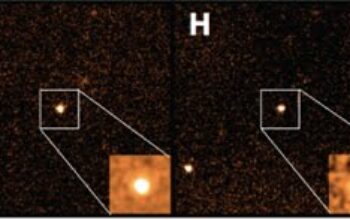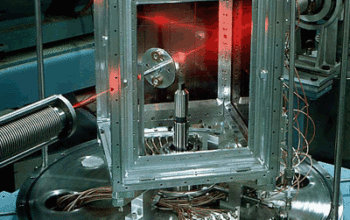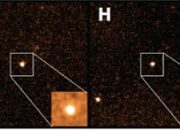In the realm of material science, the exploration of nanotubes has unveiled a rich tapestry of possibilities that beckons both researchers and engineers alike. Carbon nanotubes (CNTs), in particular, have garnered significant attention due to their exceptional mechanical, electrical, and thermal properties. Yet, amid their myriad applications, the concept of fractional effects in nanotubes remains a captivating area of inquiry, often overlooked but rich with implications. This discourse delves into the intricacies of fractional effects, elucidating their importance in the pursuit of advancing nanotechnology.
At the core of understanding fractional effects lies the concept of volume fraction. In the context of CNT composites, the volume fraction refers to the proportion of nanotubes within a given matrix material. When CNTs are introduced into a polymer or metal matrix, the resulting composite’s properties can diverge significantly from those of the individual constituents. This divergence is driven by numerous factors, including the alignment of nanotubes, dispersion quality, and interfacial interactions.
Fractional effects manifest prominently in the electrical conductivity of composite materials. For instance, low concentrations of carbon nanotubes can create a percolation threshold, wherein the conductivity dramatically increases as the nanotube volume fraction approaches a critical value. It is within this threshold that the transition from insulative to conductive behavior occurs. The intriguing aspect here is the nonlinear response of electrical conductivity to increasing nanotube content, underscoring the nontrivial relationship between structure and function in nanoscale materials.
Furthermore, the mechanical reinforcement provided by carbon nanotubes showcases another facet of fractional effects. Even at minimal incorporation levels, CNTs can impart substantial strength and stiffness to the host material. This enhancement is often attributed to the high aspect ratio and inherent tensile strength of the nanotubes. The interaction between the nanotube and matrix at low volume fractions can lead to stress transfer efficiencies that defy classical mechanics, positioning CNT composites at the forefront of advanced materials research.
In addition, the thermal conductivity of composites featuring carbon nanotubes reveals a compelling narrative. The thermal transport mechanisms in such materials are significantly influenced by the arrangement and orientation of the nanotubes within the matrix. At fractional concentrations, the phonon transport pathways are altered, enabling efficient heat dissipation—a phenomenon that can be critical in diverse applications ranging from microelectronics to thermoelectric devices. This enhancement of thermal properties as a result of fractional effects has spurred investigations into tailored thermal management solutions in various technological sectors.
Moreover, the dispersion of nanotubes within a matrix is a pivotal factor that determines the manifestation of fractional effects. Ideal dispersion ensures a homogenous distribution of nanotubes, aiding in maximizing their contribution to the composite’s overall performance. Conversely, poor dispersion can lead to agglomeration, which negates the potential benefits of CNT inclusion. Techniques such as sonication, surfactant use, and electrospinning are integral in improving dispersion strategies, indicating a synergy between processing methods and resultant material properties.
The phenomenon of fractional effects extends beyond physical properties. The incorporation of nanotubes can also induce complex changes in the composite’s rheological behavior. This is particularly relevant in polymer nanocomposites, where the viscosity can significantly alter with low filler concentrations. The result is a unique viscosity profile that may facilitate better processing characteristics, enabling manufacturers to optimize production techniques.
Intriguingly, the effects are not confined to conventional composite applications. In innovative biomedical fields, fractional effects in CNTs are being explored for drug delivery systems and biosensors. The unique surface chemistry of CNTs, when functionalized appropriately, allows for targeted delivery mechanisms that can operate effectively even at low nanomaterial concentrations. This opens new avenues for treatments with reduced side effects, demonstrating how fractional effects can have profound implications in medical science.
A further dimension to the discussion involves the potential for environmentally sustainable applications. As the quest for materials that maintain high performance while adhering to ecological standards intensifies, the role of fractional effects in reduced resource utilization becomes salient. By understanding how minimal quantities of CNTs can yield significant enhancements, researchers can formulate environmentally friendly composites that do not compromise on performance.
Addressing the challenges presented by the scale of production is essential for realizing the full potential of fractional effects in nanotubes. The inherent difficulties in synthesizing uniform, high-quality CNTs must be tackled to harness their advantageous properties effectively. The quest for scalable manufacturing processes can bridge the gap between theoretical research and practical applications, heralding a new era for composite materials.
As we reflect on the multifaceted nature of fractional effects in nanotubes, it becomes evident that this area warrants deeper investigation. It is crucial to foster interdisciplinary approaches that combine theoretical modeling, experimental verification, and industrial application. Looking ahead, the promises held within fractional effects can lead not only to innovations in material science but also to broader implications in technology, sustainability, and healthcare.
In conclusion, while the discussion surrounding carbon nanotubes often gravitates toward their striking properties, it is the nuance of fractional effects that encourages a shift in perspective. Researchers embarking on this journey are beckoned to not only dissect the existing knowledge but to cultivate curiosity that drives future explorations. Each inquiry into the fractional relationships inherent within nanotube composites promises a treasure trove of insights, underscoring the transformative potential of these remarkable materials.











